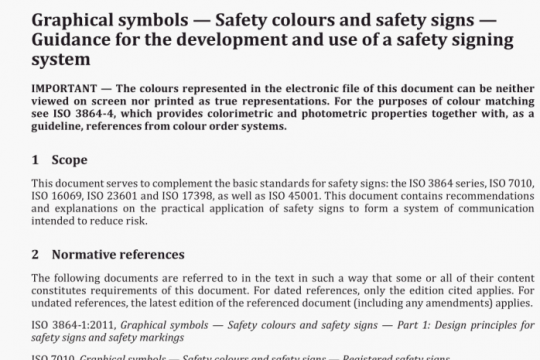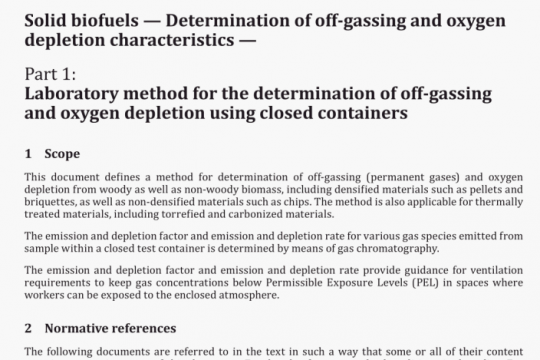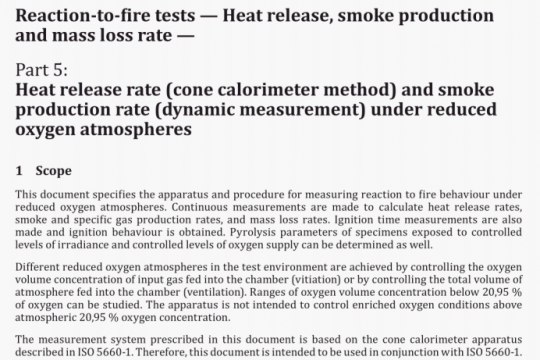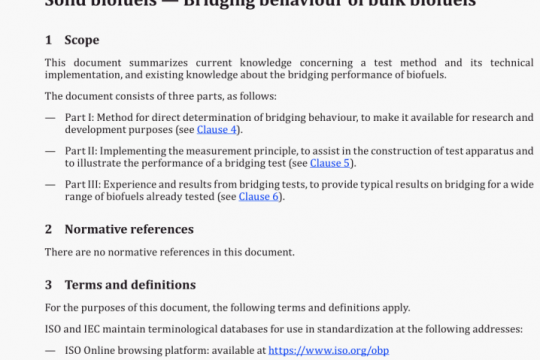ISO 6887-5 pdf free download
ISO 6887-5-2020 pdf free download.Microbiology of the food chain一 Preparation of test samples, initial suspension and decimal dilutions for microbiological examination – Part 5: Specific rules for the preparation of milk and milk products.
6 Apparatus
Usual microbiological laboratory equipment for general use (see Iso 7218 and ISO 6887-1) and, in
particular, the following.
6.1 Water baths, capable of maintaining temperatures of (34 to 38) °C and (44 to 47) °C.
6.2 Spatulas or glass rods.
6.3 Hotplate or other appdratus, capable of gentle heating (not gas burners), and capable of operating
at the required temperature.
6.4 Glass beads, of diameter about 6 mm.
7 Sampling
Sampling is not part of the method specified in this document. Follow the specific ISO document dealing with the product concerned. If there is no specific ISO document dealing with the sampling of the product concerned, it is recommended that the parties concerned come to an agreement on this subject.
Recommended sampling techniques are given in ISO 707 I IDF 50.
8 General procedures
8.1 General
All preparations and manipulations should be carried out using an aseptic technique with sterile equipment to prevent microbial contamination of samples from all external sources (see ISO 7218).
Follow the general procedure for preparation of the initial suspension as described in ISO 6887-1.
8.2 Frozen products Follow ISO 6887-1.
8.3 Hard and dry products
To mix hard products in a peristaltic blender, place the sample and diluent in double- or triple-layered sterile bags to prevent puncturing and possible sample spillage, or alternately homogenize using a rotary blender when appropriate for hard, low moisture products.
Follow ISO 6887-1 for alternative preparation methods.
8.4 Liquid and non-viscous products Follow ISO 6887-1.
8.5 Multi-component products Follow ISO 6887-1.
8.6 Acidic products Follow ISO 6887-1.
8.7 High-fat foods (fat content> 20 % mass fraction) Follow ISO 6887-1.
9 Specific procedures
9.1 Milk and liquid milk products
Mix the test sample thoroughly so that the microorganisms are distributed as evenly as possible by rapidly inverting the sample container 25 times. Avoid foaming or allow any foam to disperse. The interval between mixing and removing the test portion shall not exceed 3 mm.
Remove the test sample with a sterile pipette and prepare further dilutions in accordance with ISO 6887-1 or inoculate directly a medium or a broth in accordance with the procedure of the specific method of enumeration or detection.
9.2 Dehydrated milk, dehydrated sweet whey, dehydrated acid whey, dehydrated buttermilk and lactose
Thoroughly mix the contents of the closed container by repeatedly shaking and inverting it.
If the test sample is in the original unopened container and this is too full to permit thorough mixing, transfer it to a larger container, then mix. Open the container, remove the test portion required with a spatula (2) and proceed as indicated below. Immediately close the container again.
Prepare the initial suspension in accordance with ISO 6887-1 for dehydrated products and other low- moisture products, with a diluent for general use (Mi). For dehydrated acid whey, use dipotassium hydrogen phosphate solution (5.1.3.2) at pH 8,4 ± 0,2 or, if necessary, for roller-dried milk use sodium citrate solution (5.1.3.1) or dipotasshim hydrogen phosphate solution (5.1.3.2) at pH 7,5 ± 0,2.
NOTE For better reconstitution and in particular with roller-dried milk, glass beads (6A) can be helpful. If used, they are added to the bottle before sterilization.
Swirl slowly until the test portion has dispersed completely. Allow to stand for 5 mm, swirling occasionally.
A peristaltic blender may be used, if dispersion is not complete.ISO 6887-5 pdf download.




